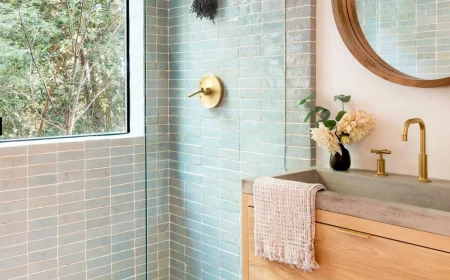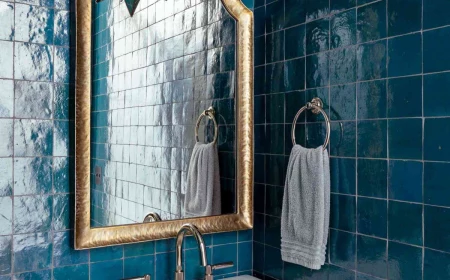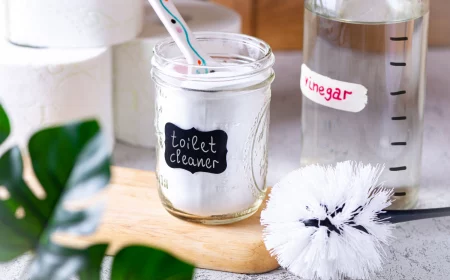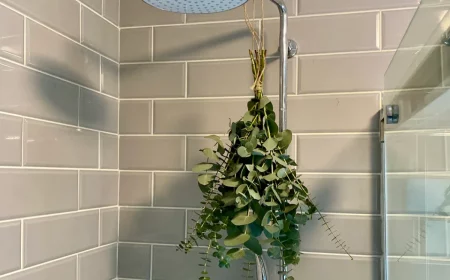How to Create a Spa Bathroom That Actually Feels Like a Spa
We all love the idea of a “spa bathroom.” But let’s be honest, most of the time this just means someone threw in a whirlpool tub with a million jets and called it a day. After years of seeing what works and what doesn’t in bathroom design, I can tell you that a true spa experience is so much more than that. It’s not about one single feature.
In this article
It’s about how water, light, air, and texture all work together to calm you down. It’s about creating a space that genuinely serves you, a personal sanctuary from the noise outside. This guide is all about the principles and techniques—and the common mistakes to avoid—so you can create a bathroom that’s a real retreat.
The Foundation: Getting Water and Air Right
Before you even think about tile, you have to get the basics right. The core of any bathroom is the water, of course, but the quality of that experience comes from systems hidden behind the walls. The same goes for the air you breathe. Getting these foundational elements perfect is where you separate a pretty bathroom from a truly luxurious one.
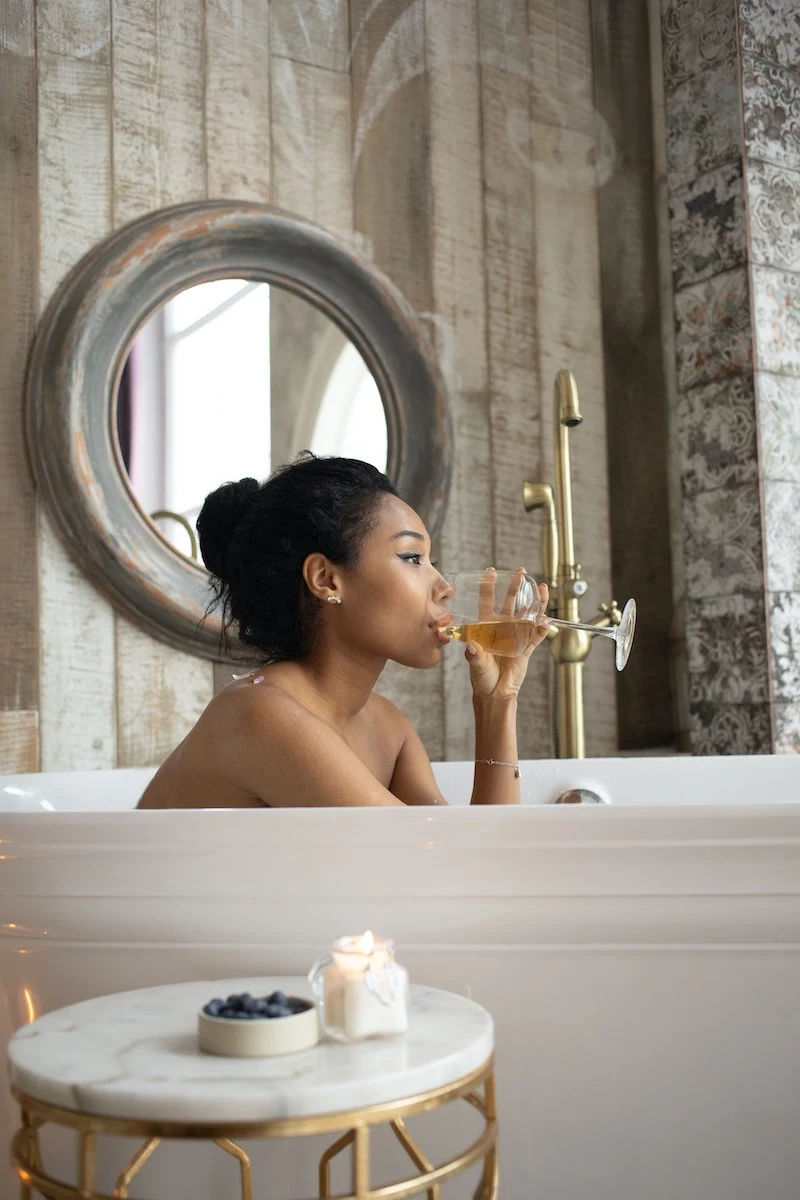
More Than Just a Shower Head
A fantastic shower is the heart and soul of a spa bathroom. Everyone loves those big, dreamy, ceiling-mounted rain shower heads. They look incredible in photos, but performance is everything. The result you get depends entirely on your home’s water pressure (measured in PSI) and the fixture’s flow rate (in GPM).
I once saw a homeowner who was so excited about the 16-inch rain head they’d ordered online. The problem? Their house had low water pressure, around 45 PSI. The result was a sad, drippy mess. We learned the hard way: you either fix the pressure or pick a fixture that works with what you’ve got.
Quick tip: Before you spend hundreds on a fancy fixture, check your pressure. You can have a plumber do it, or honestly, you can grab a simple water pressure gauge for about $15 at Home Depot or Lowe’s. Just screw it onto an outdoor spigot or your washing machine hookup to get a quick reading. Most homes sit between 40 and 60 PSI.
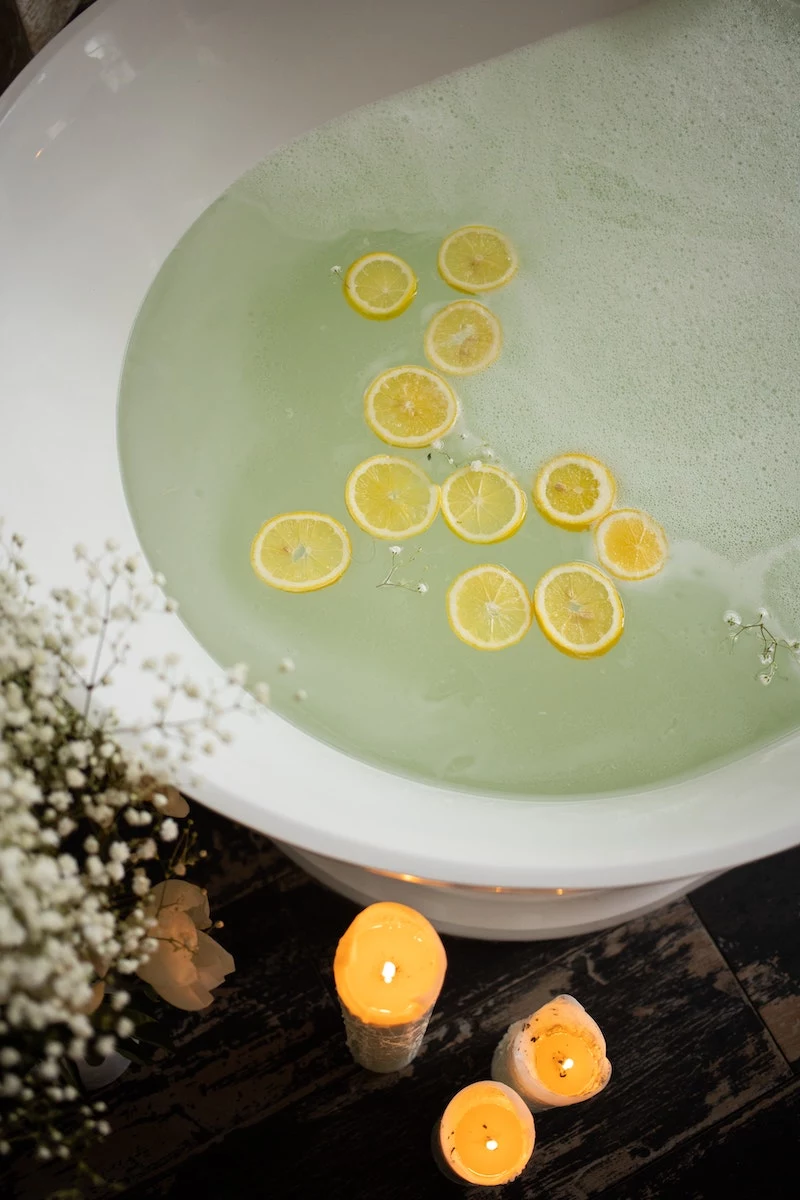
By the way, the most important part of your shower isn’t the head you see; it’s the valve behind the wall. That’s the engine. Here’s the breakdown:
- Pressure-Balancing Valves: These are the standard workhorses. They prevent you from getting scalded when someone flushes a toilet. They’re reliable and budget-friendly, usually running between $150 and $300. Perfectly fine for a basic, functional shower.
- Thermostatic Valves: This is the pro’s choice for a true spa feel. You set the exact temperature you want—say, 102 degrees—and the valve holds it there perfectly, no matter what. This is what allows you to run a shower head, a handheld sprayer, and body jets all at once without a drop in performance. Expect to invest more here, typically in the $300 to $800+ range, but the control is unmatched.
Air Quality is a Non-Negotiable Luxury
A spa should feel fresh, not damp and musty. That comes down to one thing: proper ventilation. An exhaust fan isn’t just a nice-to-have; it’s essential for protecting your investment from mold and mildew. Moisture will destroy drywall, paint, and wood vanities over time.
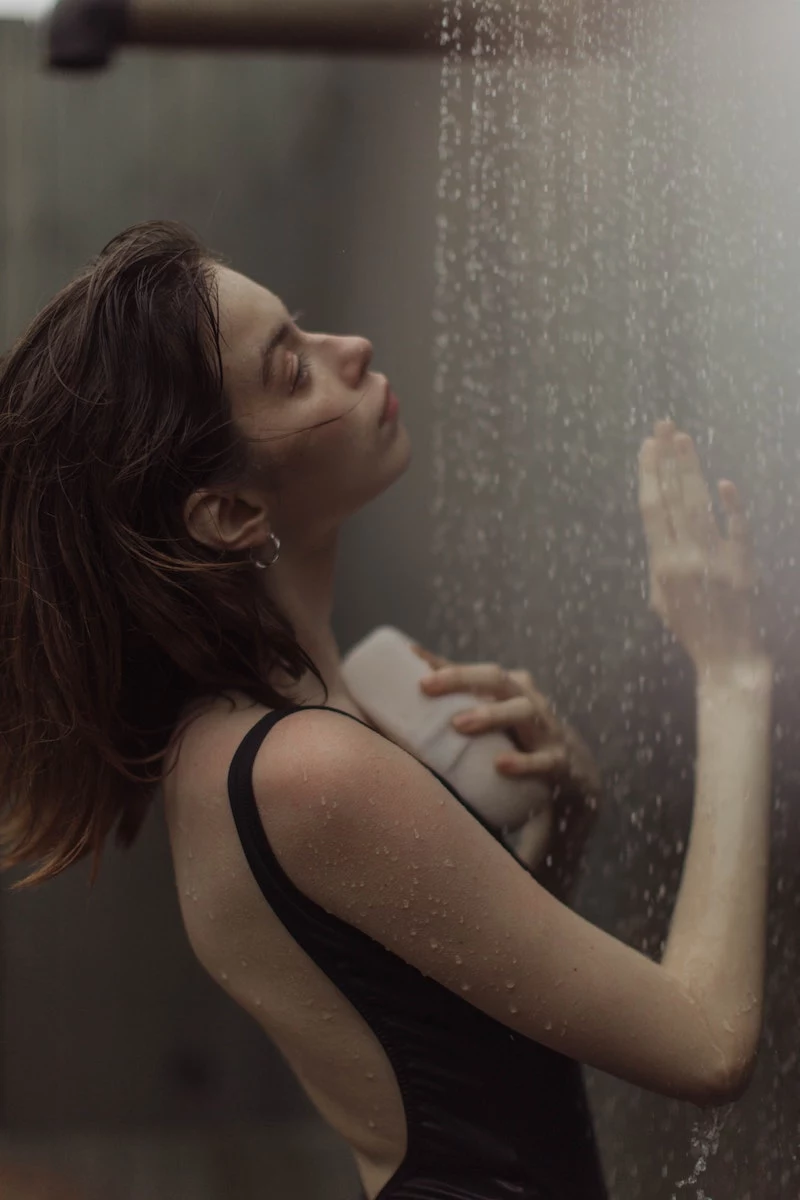
Fans are rated by how much air they move (CFM). The simple rule is you need at least 1 CFM for every square foot of floor space. So, for an 8×10 bathroom (80 sq ft), you need an 80 CFM fan, minimum. But just as important is the sound level, measured in sones. A loud, rattling fan is the opposite of relaxing. Look for fans rated at 1.0 sones or less. A quality, quiet fan from a brand like Panasonic or Broan will run you between $150 and $250, but it’s worth every penny.
Oh yeah, and many new models have a humidity sensor that automatically turns the fan on when it detects steam and off when the room is dry. It’s a brilliant “set it and forget it” feature I recommend for every project.
Setting the Mood with Light and Sound
Once the functional stuff is handled, you can start crafting the emotional experience. Light and sound are your most powerful tools here. A single, harsh overhead light can make even the most expensive bathroom feel cold and clinical.
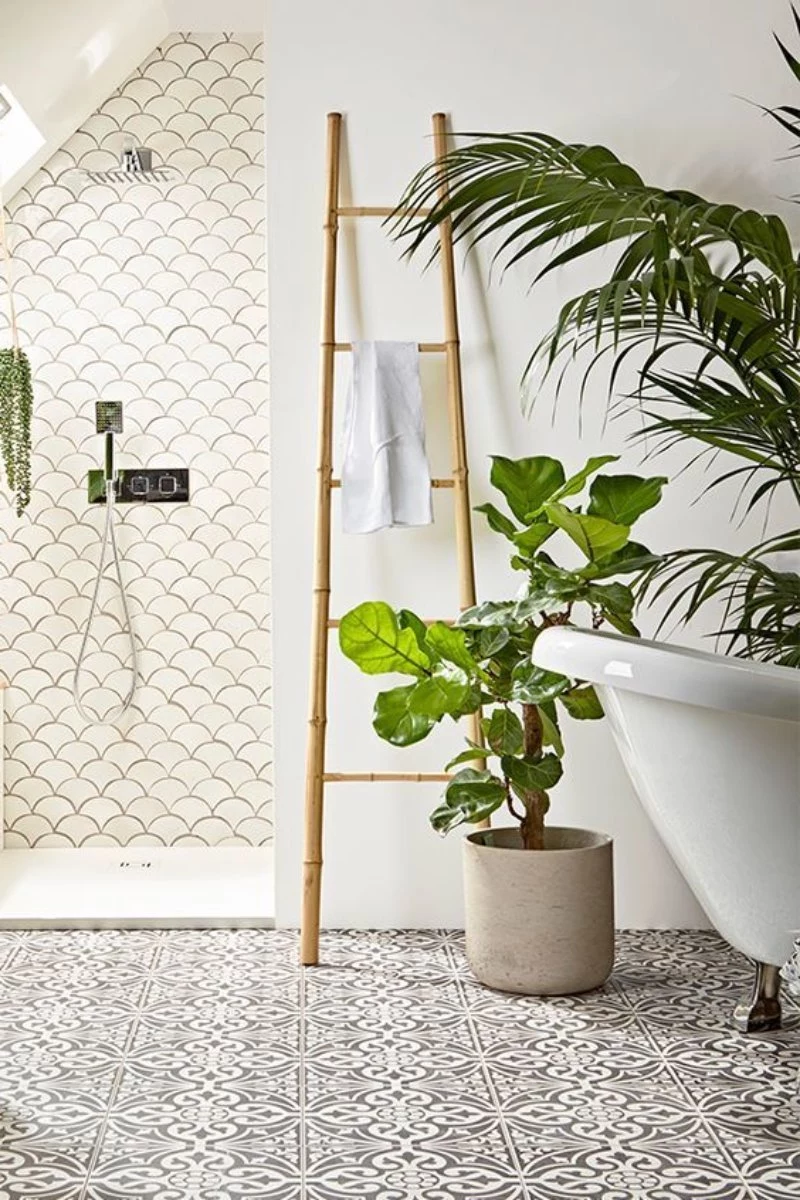
The Secret is Layered Lighting
In any high-end bathroom, the pros use at least three layers of light. Each one has a job.
1. Ambient Light: This is your general, overall light from recessed cans or a central fixture. It’s for basic visibility. 2. Task Light: This is focused light for things like makeup or shaving. Pro Tip: The best setup is two sconces on either side of your mirror, at about face height. This gives you even, shadow-free light. A single light above the mirror is a classic mistake—it casts unflattering shadows under your eyes and nose. 3. Accent Light: This is the magic. It’s subtle light to create a mood. Think of a tiny waterproof light in a shower niche or some LED strip lighting underneath a floating vanity.
The real secret, though, is putting every single light on a dimmer switch. This lets you have bright, energetic light in the morning and a soft, gentle glow for a relaxing bath at night.
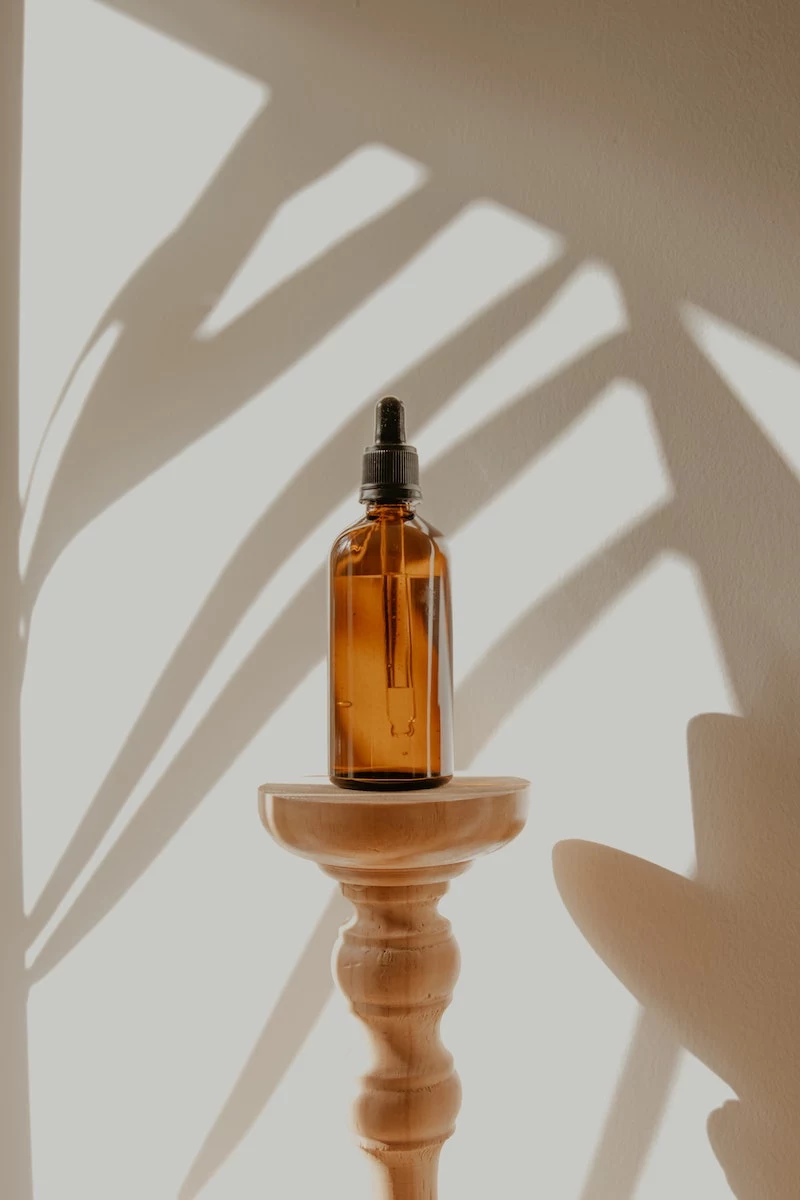
When you’re buying bulbs, look for two things: a warm color temperature (around 2700K to 3000K for that candle-lit feel) and a high Color Rendering Index (CRI). And here’s something most people don’t know: a high CRI (look for 90+) doesn’t just make your tile look better—it makes you look better. Your skin tone will look natural and healthy in the mirror, whereas a low CRI light can make you look washed out.
Heads up! Water and electricity are a deadly mix. All outlets must be GFCI-protected, and any light fixture inside a shower or tub area needs to be specifically UL-rated for “wet locations.” This is not a DIY job. A licensed electrician’s fee is an investment in safety and peace of mind.
Don’t Forget the Sound
Music or calming nature sounds can totally transform the vibe. A portable Bluetooth speaker is fine, but for a seamless look, consider built-in, moisture-rated speakers. You can have them installed right into the ceiling and connect them to a hidden Bluetooth amplifier. It’s a clean, elegant solution that keeps your surfaces clutter-free.
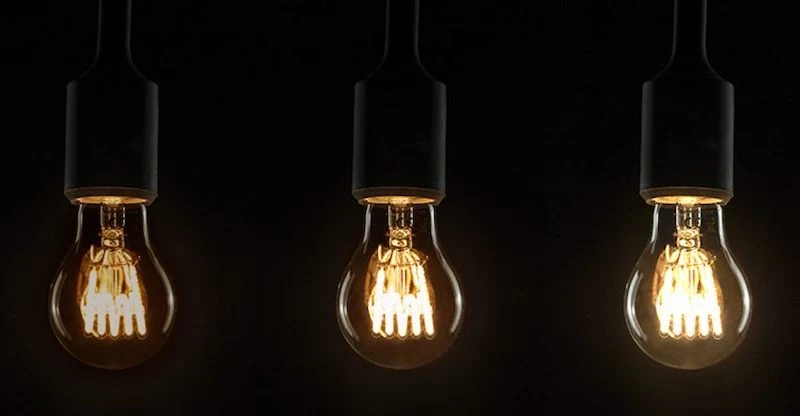
The Feel of Things: Warmth and Texture
What you feel is just as important as what you see. The cold shock of a tile floor can instantly ruin the cozy vibe of a warm bath. This is where materials really matter.
The Ultimate Luxury: Heated Floors
Of all the upgrades you can make, radiant floor heating gets the most rave reviews. It is an absolute game-changer. It’s a system of thin electric wires in a mat that goes under your tile. The gentle, even warmth that rises from the floor feels incredibly luxurious on a cold morning. The materials themselves aren’t outrageous—expect to pay around $15 to $25 per square foot for the mats. The main cost is the professional installation, as you’ll need both a tile setter and an electrician to do it safely.
Materials That Feel Good
While slick, polished tile can look clean, it can also feel a bit cold. Consider materials with a more natural, comforting texture.
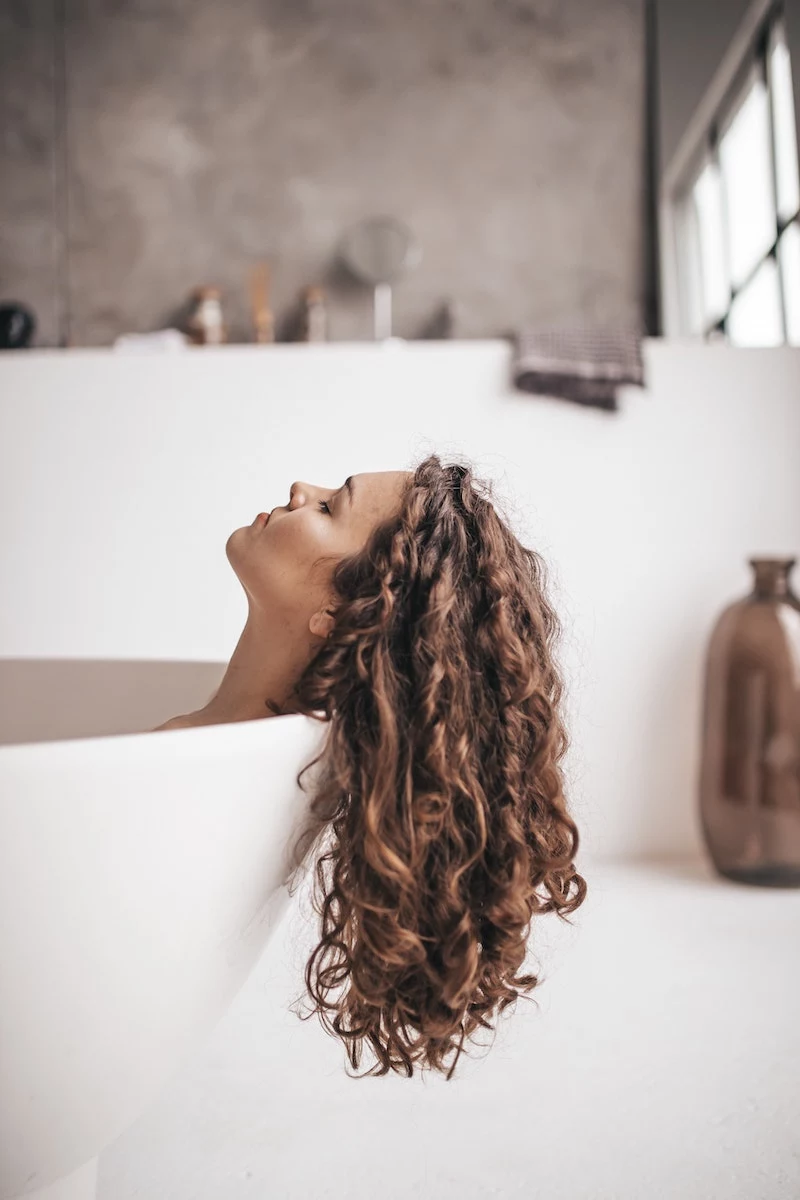
- Natural Stone: Things like travertine or honed (matte) marble have a beautiful, organic feel. They do need to be sealed to prevent stains, but it’s not as scary as it sounds. It just means you need to clean them with a pH-neutral cleaner and apply a quality stone sealer about once a year—a simple DIY job that takes maybe an hour.
- Wood-Look Porcelain: This is a fantastic option. You get the warm, inviting look of wood with the bulletproof durability and low maintenance of porcelain tile.
- Teak Wood: For a shower bench or a bath mat, you can’t beat teak. It’s naturally oily and water-resistant, providing a warm, non-slip surface to sit or stand on.
And let’s talk about the simple pleasure of a warm towel. A towel warmer is a small detail that feels incredibly luxe. A good plug-in model can be found for under $200, while a sleeker hardwired version might be in the $300-$600 range, plus the cost of an electrician. They also dry your towels quickly, which means no more musty smells.

The Final Touches: Order, Comfort, and Life
A true spa is an orderly, uncluttered space. The final step is to get rid of visual noise and add elements of pure comfort.
Visual clutter creates mental clutter. A countertop littered with half-empty bottles is the opposite of relaxing. The solution is smart storage. Think recessed medicine cabinets, a built-in shower niche for your bottles, and a vanity with drawers instead of just a big empty cabinet.
Next, invest in amazing textiles. The weight of towels is measured in Grams per Square Meter (GSM). That plush, heavy feel you get from a fancy hotel towel? That’s usually 700 GSM or higher. Look for high-quality Egyptian or Turkish cotton. It makes a huge difference.
Finally, bring in a little life. A plant can soften all the hard surfaces in a bathroom. Snake plants and ZZ plants are nearly indestructible and do well in low light. Ferns and orchids love the high humidity. A little touch of green makes the whole space feel more alive and calming.
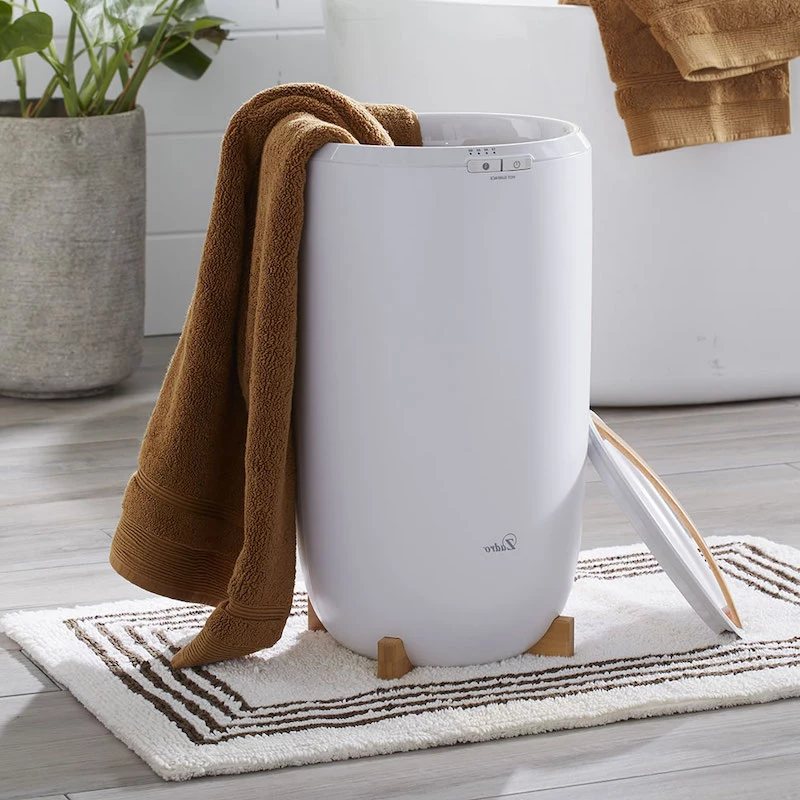
How to Start: From Weekend Update to Full Gut Job
You don’t have to do it all at once! You can phase your project over time.
Quick Weekend Upgrades (DIY-friendly):
- Declutter your counters and organize everything into trays or jars.
- Buy new, high-GSM towels and a plush bath mat (Cost: $50-$150).
- Add a humidity-loving plant and an essential oil diffuser (Cost: $20-$50).
- Swap your light bulbs for warm (2700K), high-CRI (90+) versions.
Minor Upgrades (Might need a pro):
- Have an electrician install dimmer switches (a few hours of labor).
- Replace that loud fan with a quiet, high-CFM model (Cost: ~$200 + 2 hrs electrician time).
- Install a plug-in or hardwired towel warmer.
Major Renovation (Definitely call the pros):
- Retiling the floors and walls.
- Installing a radiant heat system under the floor.
- Upgrading the plumbing for a new thermostatic shower system.
- Running new electrical for layered lighting and sound.
My final piece of advice? Be honest about your own skills. A mistake with plumbing can cause thousands in water damage, and an electrical error can be far, far worse. Knowing when to call a professional is an investment in your safety and in the quality of your finished sanctuary. And ultimately, that peace of mind is what a spa bathroom is all about.

Inspirational Gallery
How can lighting truly transform a bathroom into a retreat?
The secret is layering. Instead of a single, harsh overhead light, aim for at least three sources. Start with dimmable recessed ceiling lights for general brightness. Add vanity sconces at eye level to eliminate shadows—ideal for daily routines. Finally, introduce a ‘mood’ layer: think low-level LED strips under a floating vanity or a single, beautiful waterproof pendant light in a corner. Using dimmers on all circuits, like those from Lutron, is non-negotiable for shifting from a bright, energizing morning space to a serene, evening sanctuary.
A 2021 survey found that heated floors are the number one ‘most-wanted’ feature in a primary bathroom renovation.
This isn’t just about winter warmth. The gentle, radiant heat underfoot contributes to a pervasive sense of comfort and luxury year-round. Systems like Schluter-DITRA-HEAT are installed directly under the tile, providing an invisible upgrade that elevates the entire sensory experience from the moment you step inside. It’s a splurge that pays dividends in daily comfort.
- Keeps your towel perfectly dry and fungus-free.
- Adds a touch of enveloping warmth after every shower.
- Gently warms the room, reducing post-bath chills.
The luxury behind these daily comforts? A towel warmer. Whether you opt for a wall-mounted electric model from a brand like Amba for its easy installation, or a hydronic version plumbed into your central heating for maximum efficiency, this simple addition is a signature element of a high-end spa.
Acrylic Tubs: Lightweight, easy to install, and warm to the touch. Modern acrylics, like those from Maax, offer excellent heat retention and come in a vast array of sculptural shapes. They are the versatile workhorse of modern bathroom design.
Cast Iron Tubs: The heavyweight champion. Unmatched in heat retention (it keeps water hot for longer) and durability. Brands like Kohler continue to produce classic models that offer a deep, substantial soaking experience and an authentic, timeless feel.
For pure spa-like soaking, cast iron’s thermal mass is superior, but for design flexibility and ease, acrylic is a clear winner.
The sound of your space is as important as its look. A truly serene bathroom should insulate you from the noise of the outside world. Consider adding sound-dampening insulation, such as Rockwool, into interior walls during a renovation. For a simpler fix, a high-quality, waterproof Bluetooth speaker, like the Sonos Roam, allows you to overlay the space with calming soundscapes, ambient music, or guided meditations, instantly masking distractions.
Think beyond generic scents. The key to an authentic spa atmosphere is a subtle, natural fragrance. Instead of plug-ins, hang a fresh bundle of eucalyptus from your shower head—the steam will release its therapeutic oils. For continuous fragrance, a high-quality ultrasonic diffuser from a brand like Vitruvi paired with pure essential oils like lavender, cedarwood, or frankincense offers a sophisticated, non-toxic alternative that you can tailor to your mood.
Evoke the spirit of a Japanese onsen by focusing on natural, humble materials. Introduce a slatted bath mat made of Hinoki wood, prized for its calming citrus scent and resistance to mold. Place a small, minimalist stool beside the tub for your essentials. Instead of intricate tiles, consider large-format porcelain in a slate or stone finish to create a seamless, grounding effect. The goal is tranquility through simplicity.
The common mistake: Storing everything in its original, mismatched plastic packaging. A collection of colorful shampoo bottles, tubes of toothpaste, and soap cartons creates visual clutter that undermines a calm aesthetic.
The simple solution: Decanting. Invest in a cohesive set of refillable dispensers for hand soap, lotion, shampoo, and conditioner. Brands like Yield Design offer beautiful glass or ceramic options. This small change creates an immediate sense of order and intention, making your countertop feel curated and serene.
A true spa experience engages all the senses, especially touch. You can achieve this without a full renovation.
- Upgrade your textiles: Swap out old towels for a set of plush, oversized Turkish cotton towels from a brand like Parachute or Brooklinen. Their weight and absorbency feel incredibly luxurious.
- Add a textured bath mat: Choose a mat made from natural materials like bamboo, diatomaceous earth, or a thick, tufted cotton for a pleasing sensation underfoot.
- Introduce natural elements: A simple wooden bath tray or a stool brings a warm, organic texture to an often cold, hard-surfaced room.

